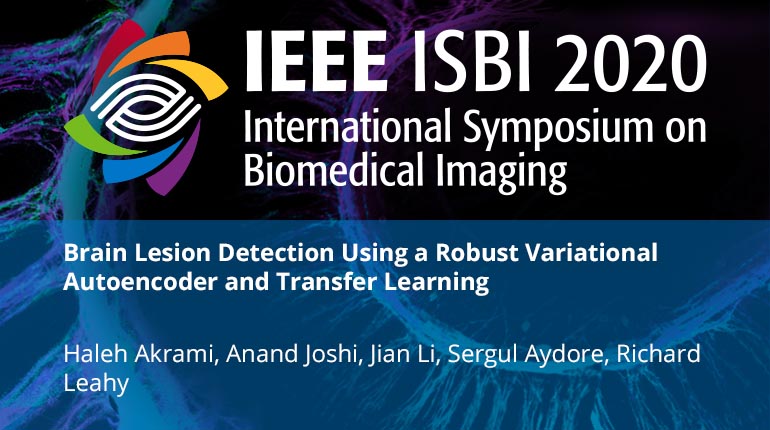
Already purchased this program?
Login to View
This video program is a part of the Premium package:
Brain Lesion Detection Using a Robust Variational Autoencoder and Transfer Learning
- IEEE MemberUS $11.00
- Society MemberUS $0.00
- IEEE Student MemberUS $11.00
- Non-IEEE MemberUS $15.00
Brain Lesion Detection Using a Robust Variational Autoencoder and Transfer Learning
Automated brain lesion detection from multi-spectral MR images can assist clinicians by improving sensitivity as well as specificity in lesion studies. Supervised machine learning methods have been successful in lesion detection. However, these methods usually rely on a large number of manually delineated imaging data for specific imaging protocols and parameters and often do not generalize well to other imaging parameters and demographics. Most recently, unsupervised models such as Auto-Encoders have become attractive for lesion detection since they do not need access to manually delineated lesions. Despite the success of unsupervised models, using pre-trained models on an unseen dataset is still a challenge. This difficulty is because the new dataset may use different imaging parameters, demographics, and different pre-processing techniques. Additionally, using a clinical dataset that has anomalies and outliers can make unsupervised learning challenging since the outliers can unduly affect the performance of the learned models. These two difficulties make unsupervised lesion detection a particularly challenging task. The method proposed in this work addresses these issues using a two-prong strategy: (1) we use a robust variational autoencoder model that is based on robust statistics specifically, $beta$-divergence which can learn from data with outliers; (2) we use a transfer-learning method for learning models across datasets with different characteristics. Our results on MRI datasets demonstrate that we can improve the accuracy of lesion detection by adapting robust statistical models and transfer learning for a Variational Auto-Encoder model.
Automated brain lesion detection from multi-spectral MR images can assist clinicians by improving sensitivity as well as specificity in lesion studies. Supervised machine learning methods have been successful in lesion detection. However, these methods usually rely on a large number of manually delineated imaging data for specific imaging protocols and parameters and often do not generalize well to other imaging parameters and demographics. Most recently, unsupervised models such as Auto-Encoders have become attractive for lesion detection since they do not need access to manually delineated lesions. Despite the success of unsupervised models, using pre-trained models on an unseen dataset is still a challenge. This difficulty is because the new dataset may use different imaging parameters, demographics, and different pre-processing techniques. Additionally, using a clinical dataset that has anomalies and outliers can make unsupervised learning challenging since the outliers can unduly affect the performance of the learned models. These two difficulties make unsupervised lesion detection a particularly challenging task. The method proposed in this work addresses these issues using a two-prong strategy: (1) we use a robust variational autoencoder model that is based on robust statistics specifically, $beta$-divergence which can learn from data with outliers; (2) we use a transfer-learning method for learning models across datasets with different characteristics. Our results on MRI datasets demonstrate that we can improve the accuracy of lesion detection by adapting robust statistical models and transfer learning for a Variational Auto-Encoder model.
 Cart
Cart Create Account
Create Account Sign In
Sign In





